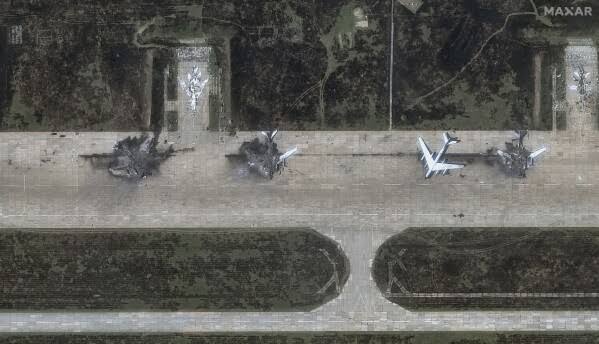Moscow — Russia’s long-range air power has been dealt a significant blow following a series of Ukrainian drone strikes that have disabled or destroyed a substantial number of strategic bombers. The attacks, which reached deep into Russian territory, mark a turning point in the war and expose critical gaps in Russia’s ability to replenish its aging aerial fleet.
Ukrainian Strikes Hit Russia’s Strategic Backbone
Ukrainian forces have in recent months targeted several Russian airbases, including Engels-2 and Soltsy-2, reportedly destroying or disabling up to 20 aircraft. Among the losses are Soviet-era Tu-95MS “Bear” and Tu-22M3 “Backfire” bombers—vital assets in Russia’s long-range strike arsenal.
While independent verification remains limited, open-source intelligence and satellite imagery suggest that at least 10 of these aircraft have been rendered inoperable. The strikes underscore Ukraine’s evolving capability to carry out long-range precision operations far beyond the front lines.
Aging Aircraft, No Easy Replacements
Replacing the bombers is a daunting task for Russia’s defense establishment. Both the Tu-95 and Tu-22 platforms were developed during the Cold War, and their production lines have long since been decommissioned. Though Russia has undertaken periodic modernization of these aircraft, rebuilding them in significant numbers is not a viable short-term option.
Russia’s attempts to ramp up production of newer models—such as the Tu-160M, a modernized supersonic bomber, and the PAK-DA, a next-generation stealth aircraft—are progressing slowly. The Tu-160M has entered limited production, while the PAK-DA remains in the prototype stage and is not expected to be operational before 2027.
Industrial and Strategic Constraints
Russia’s military industry, already strained by two years of war and burdened by international sanctions, lacks the capacity to rapidly manufacture replacements. Sanctions have severely restricted access to critical components such as avionics, advanced materials, and high-performance engines, further complicating efforts to modernize or scale up bomber production.
“This is not just a technical or logistical problem; it’s a systemic bottleneck,” noted a European defense analyst. “Russia is trying to fight a 21st-century war with a Cold War-era industrial base.”
Escalation Follows Bomber Losses
In direct response to the Ukrainian strikes, Russia launched a large-scale aerial assault on June 6, deploying over 400 drones and 40 cruise missiles against targets in Kyiv, Dnipro, and nine other regions across Ukraine. Ukrainian officials reported intercepting a majority of the incoming threats, but significant damage was still inflicted on civilian infrastructure.
At least three people were confirmed dead, including emergency workers, and dozens were injured. Widespread blackouts, transport disruption, and hospital evacuations followed the attacks, with cities reporting damage to power stations and metro lines.
The wave of retaliatory strikes highlights the volatile tit-for-tat nature of the conflict, with both sides relying increasingly on drone and missile technologies to strike strategic targets.
Global Implications and Outlook
Although the loss of bombers does not weaken Russia’s nuclear deterrent—which is still heavily reliant on land-based ICBMs and submarine-launched missiles—it diminishes Moscow’s capacity for conventional, long-range bombardment. The strategic aviation fleet plays a crucial role in projecting military influence and delivering precision strikes far from the front lines.
For Ukraine, the successful targeting of Russian bombers represents a symbolic and strategic breakthrough. It demonstrates both technological innovation and an expanded reach, likely aided by Western intelligence and domestically developed drone systems.
For Russia, the long-term implications are stark. Without a reliable means to replace its bomber fleet, and with sanctions constraining its industrial recovery, Moscow may find its strategic airpower severely degraded for years to come.
As the war continues to evolve, the skies above Eastern Europe are becoming an increasingly contested domain—where drones, missiles, and attrition now define a new chapter of modern warfare.
—
© 2025 WorldNow International.delivering real-time global affairs analysis from frontline regions. For syndication or permissions, contact: Worldnowmail@gmail.com







































